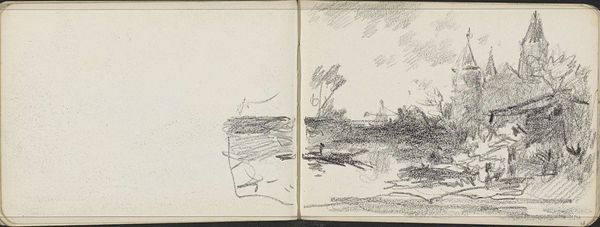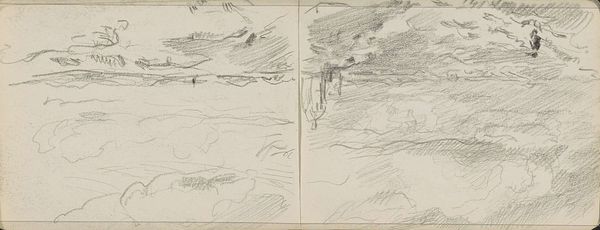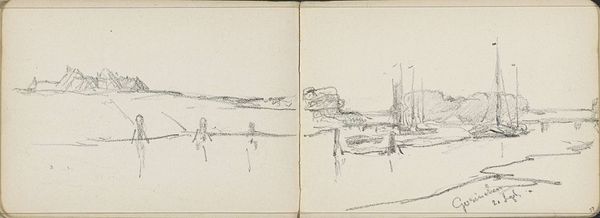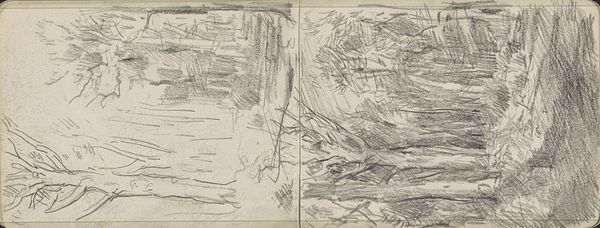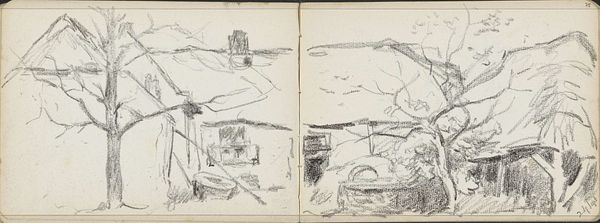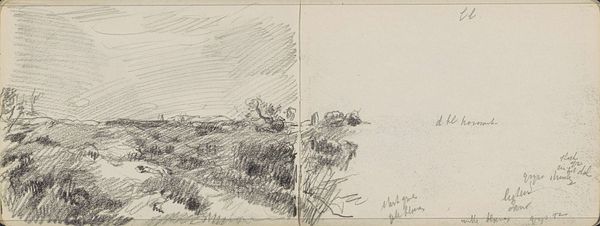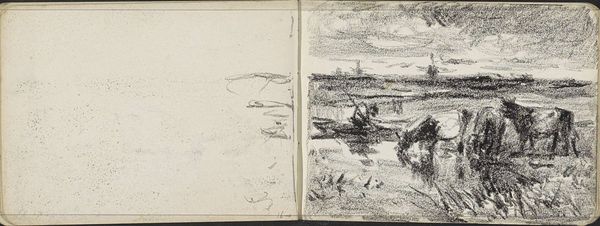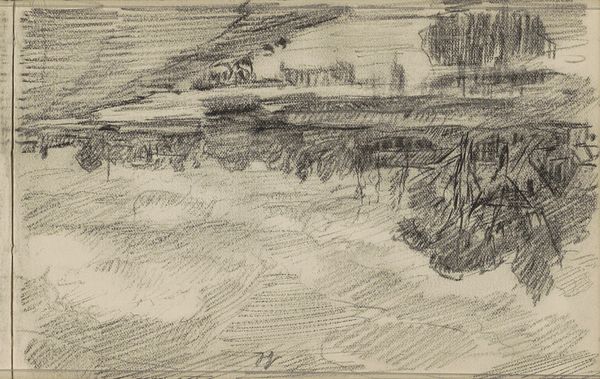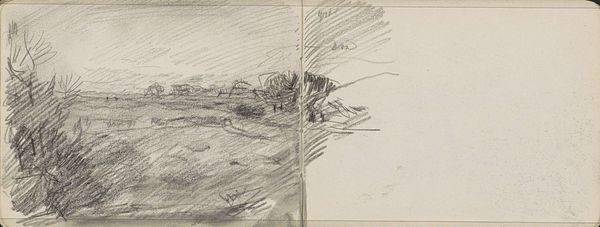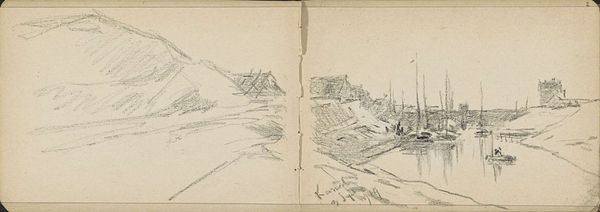
drawing, graphite
#
drawing
#
pen sketch
#
sketch book
#
landscape
#
personal sketchbook
#
sketchwork
#
pen-ink sketch
#
pen work
#
graphite
#
sketchbook drawing
#
storyboard and sketchbook work
#
sketchbook art
#
realism
#
initial sketch
Copyright: Rijks Museum: Open Domain
Curator: Immediately, I see a raw, unfinished quality, a lightness, like a fleeting moment captured. The overall effect feels ethereal, almost ghostly. Editor: We are looking at "Landschap met bebouwing," or "Landscape with Buildings," a pen and graphite drawing by Johan Antonie de Jonge, likely created sometime between 1881 and 1927. Curator: The parallel images mimic each other, so that adds to this ethereal quality. And given it's likely a sketch book drawing, I would describe its style more like personal realism than... Editor: Certainly, that close mirrored duplication of an image enhances its symmetry and provides an excellent field of study and invites the viewer to linger over the similarities and slight but certain differences. Look at the scratching, scribbling gestures of the water below that architectural silhouette. Curator: I can't help but think about the impermanence of memory looking at this. What did that particular building represent? And is it still there, now that over a hundred years has gone by since it was likely drawn? The simple act of capturing the image keeps some ghost of the actual structure with us. Editor: Exactly, the texture becomes a crucial carrier of the historical narrative. Note, too, the tonal variation achieved with what seems to be just graphite. A simple medium, yet the cross-hatching gives volume and light...a very controlled atmospheric perspective. Curator: Perhaps for de Jonge, architecture and landscape were symbols for something much more vast. For instance, perhaps the 'bebouwing,' as you said, were a stand-in for something emotional, such as stability in his life or even simply security in the natural world. Buildings contain, after all, don't they? Editor: That brings an emotional weight to these preliminary, but not necessarily insignificant, lines and shades. So what do we take away after scrutinizing this work for several moments? Curator: I see an argument for holding on to and capturing the smallest details of what appears to be everyday life because their impressions outlive what we initially observe and imbue what survives with emotional afterlives. Editor: Agreed. I initially only appreciated its bare aesthetic form, and now I can perceive within it much greater dimensions in space and time.
Comments
No comments
Be the first to comment and join the conversation on the ultimate creative platform.
